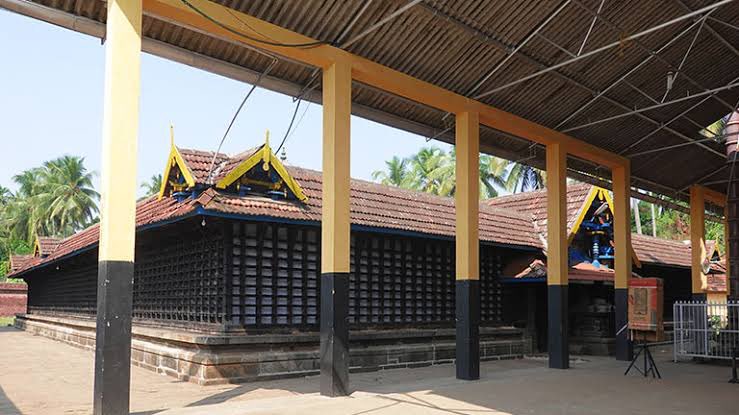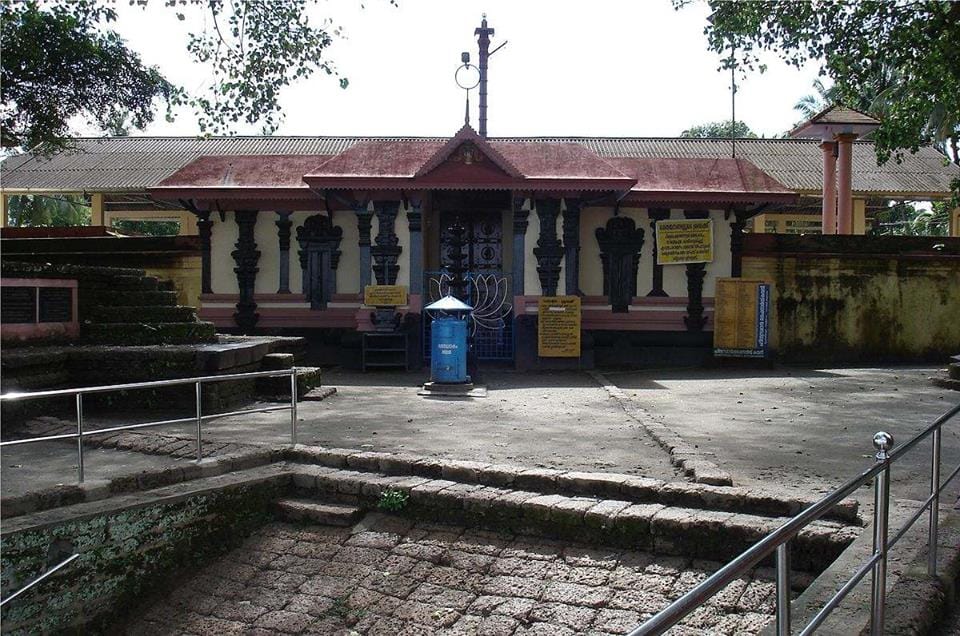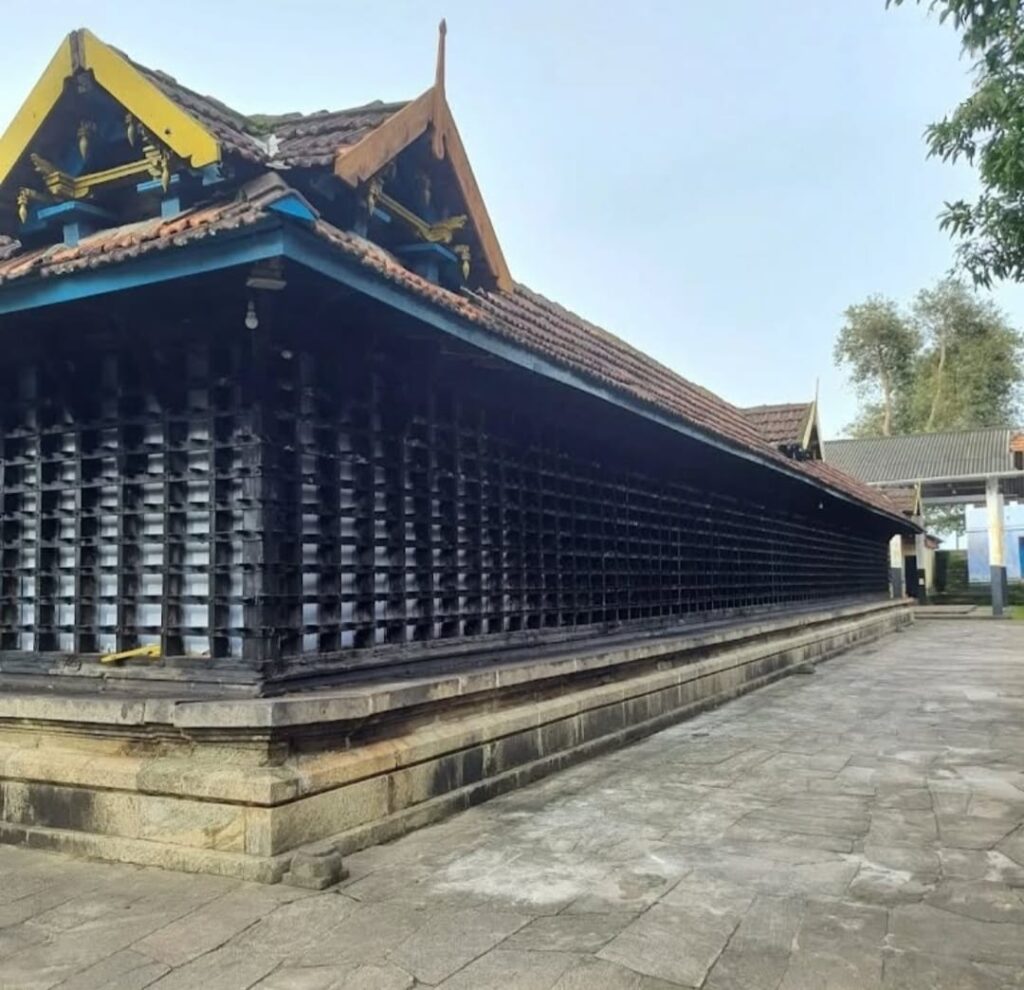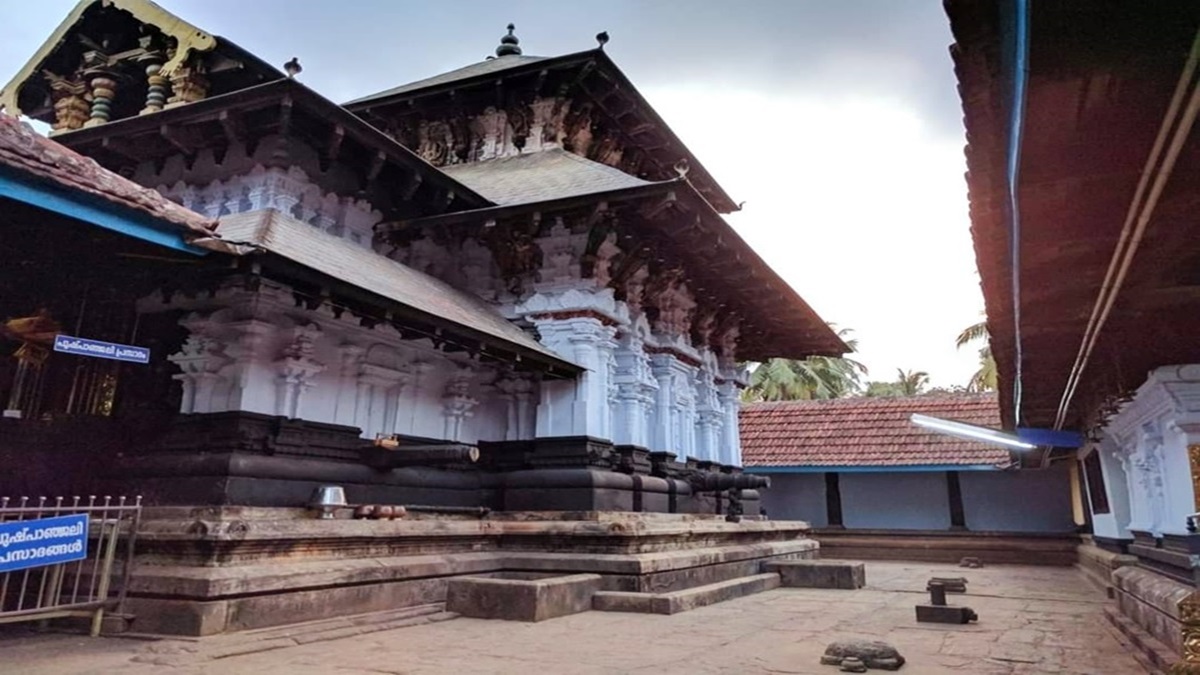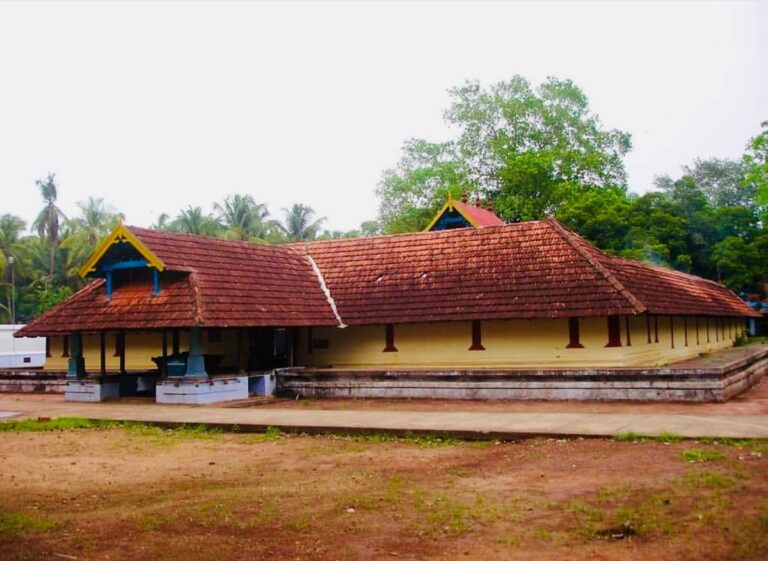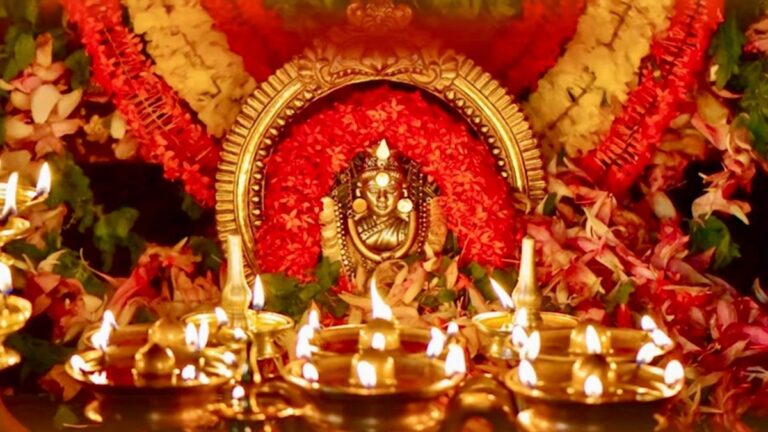Om Namo Narayanaya!
Introduction
On the banks of Bharata puzha (river) is situated the divine Shri Thirunavaya Nava Mukunda Temple which is estimated to be 5000 years old. Maha Vishnu is the presiding Deity. The temple is considered one among the 108 punya sthals for Vaishnavas and was visited by Shri Adi Shankaracharya and Shri Nammalvar. The famous medieval festival ‘Mamangam’ which used to be held once in 12 years used to be held on the banks of river Bharata Puzha near the temple.
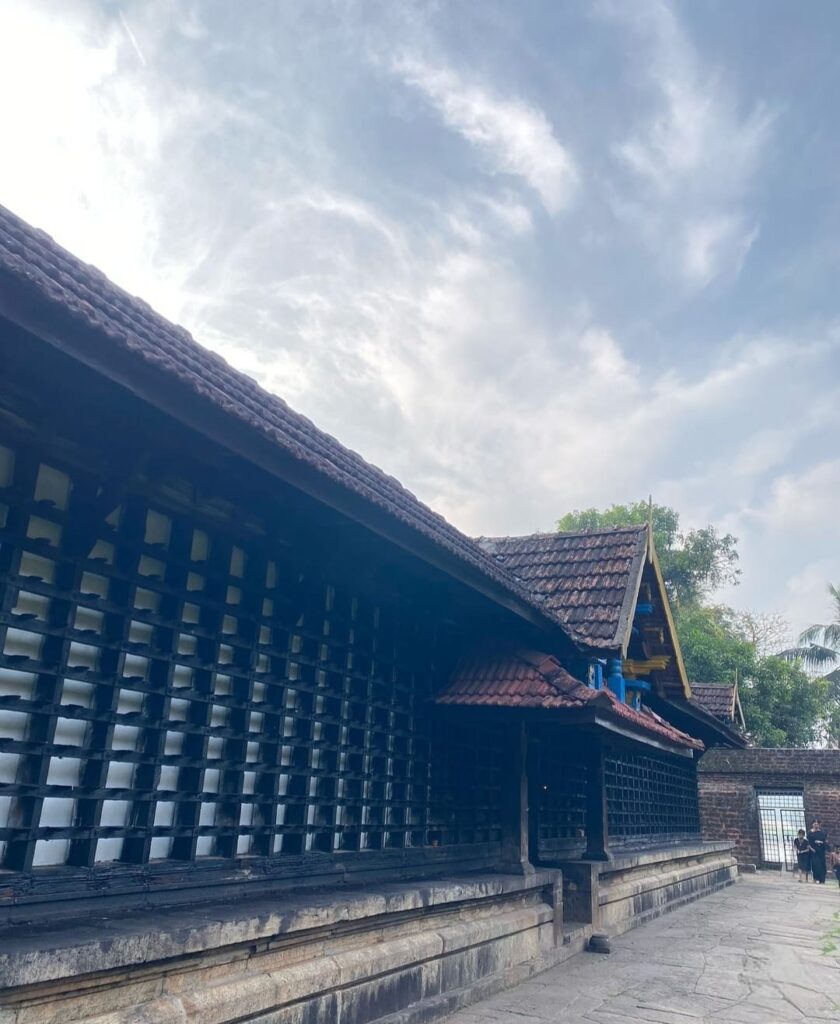
Quick Information on how to reach Shri Thirunavaya Nava Mukunda Temple Nava Mukunda Temple
| Nearest Airport | Kozhikode Airport (CCJ) |
| Distance from Airport | Approximately 45 Km |
| Travel Time from Kozhikode Airport | Approximately 1 Hour 30 Minutes |
| Travel Options from Kozhikode Airport | Private taxi from the Airport or from within the city / Train from Kozhikode Railway Station / Private and KSRTC bus services. |
| Nearest Railway Station | Thirunavaya (TUA) or Tirur (TIR) |
| Travel Options | Taxi from railway station or Autorickshaw |
| Nearest Bus Station | Tirur / Kuttipuram Bus Stand |
| Temple Timings | Morning 5.00 AM to 11.00 AM Evening 5.00 PM to 7.30 PM |
History of Shri Thirunavaya Nava Mukunda Temple
King Hrishabha from Ayodhya accompanied his wife Jayanti and nine sons namely Kavi, Hari, Antarikshan, Prabudhan, Pipalayanan, Avirhotran, Dhrumilan, Chamasan, Karabhajanan went to the banks of Gandaki river to pray. During their time on the banks of the river Gandaki, the nine sons got 9 salagramams. These nine salagramams had immense Vaishnava presence in them.
They decided to perform the Pratistha of these nine Salagramams at a rightful and sacred place and started their journey. They reached the north bank of Bharata Puzha and saw there were a lot of Banyan trees thereby realizing that it was the rightful place for the Pratistha. The eldest son Kavi performed the 1st Pratistha of the Salagramam. However, the Salagramam sank into the earth. Following this, 7 other brothers performed the Pratistha of the Salagramam at the same place, however, each of those Salagramam also sank into the earth.
The last son of King Rishabha, Karabhajanan prayed that the Salagramam he had should not sink into the earth and prayed that for the betterment of people, the divine power should stay in this place. Further, he prayed to offer Lotus flower garland daily along with milk payasam (Kheer) and lit a lamp with ghee. The 9th Salagramam did not sink into the earth is what is believed. The name Nava Mukunda is thereby given as there were 9 yogis who performed Pratistha of 9 Salagramams.
About Shri Thirunavaya Nava Mukunda Temple
The presiding deity at Shri Thirunavaya Nava Mukunda Temple is Maha Vishnu who is facing east. Covered in Pancha Loham (5 metal alloys), the idol of Maha Vishnu is approximately 4 feet tall. There is the presence of Lord Parashuram as well in this temple. Therefore, Shri Thirunavaya Nava Mukunda Temple is also an important place for Pitru tarpan (homage performed for the souls of departed ancestors).
The sanctum sanctorum at Shri Thirunavaya Nava Mukunda Temple has a door towards the west side which is never opened. There is a Nandi sculpture facing north outside the west side door on the sanctum sanctorum. A Nandi sculpture in a Maha Vishnu temple is a very special sighting. The significance of Nandi here is because Rishi Markandeya first went to Maha Vishnu at Shri Thirunavaya Nava Mukunda Temple before Maha Vishnu himself guided Rishi Markandeya to Karanathil Shiva temple in Triprangode.
It is said that Maha Vishnu himself opened a door on the west side and guided Rishi Markandeya. After Rishi Markandeya exited the sanctum sanctorum, the door closed, and it has never been opened since then. It is also believed that Nandi came here to show the way to Rishi Markandeya.
There is also a big Ganapati Vigraham (Statue) at Shri Thirunavaya Nava Mukunda Temple. There is Shri Vara Lakshmi Pratistha as well towards the Vama bhagam (left side) of Maha Vishnu outside the sanctum. Once Shri Adi Shankaracharya visited this place and could see Salagramam beneath the earth. Therefore, to pay respect, it is said that Shri Adi Shankaracharya visited the temple on his knees instead of keeping his legs on the sacred land.
One of the stories says, that on seeing Shri Adi Shankaracharya crawling on his knees, a few rich people who used to live there made fun of Shri Adi Shankaracharya.
Adi Shankaracharya understood that they were making fun of him because they were immensely rich, and their richness came from Goddess Vara Lakshmi’s blessings. Adi Shankaracharya patted Maha Lakshmi’s Vara Mudra hand (the hand that gives blessings) which then turned the hand position downwards and did not have Vara Mudra anymore.
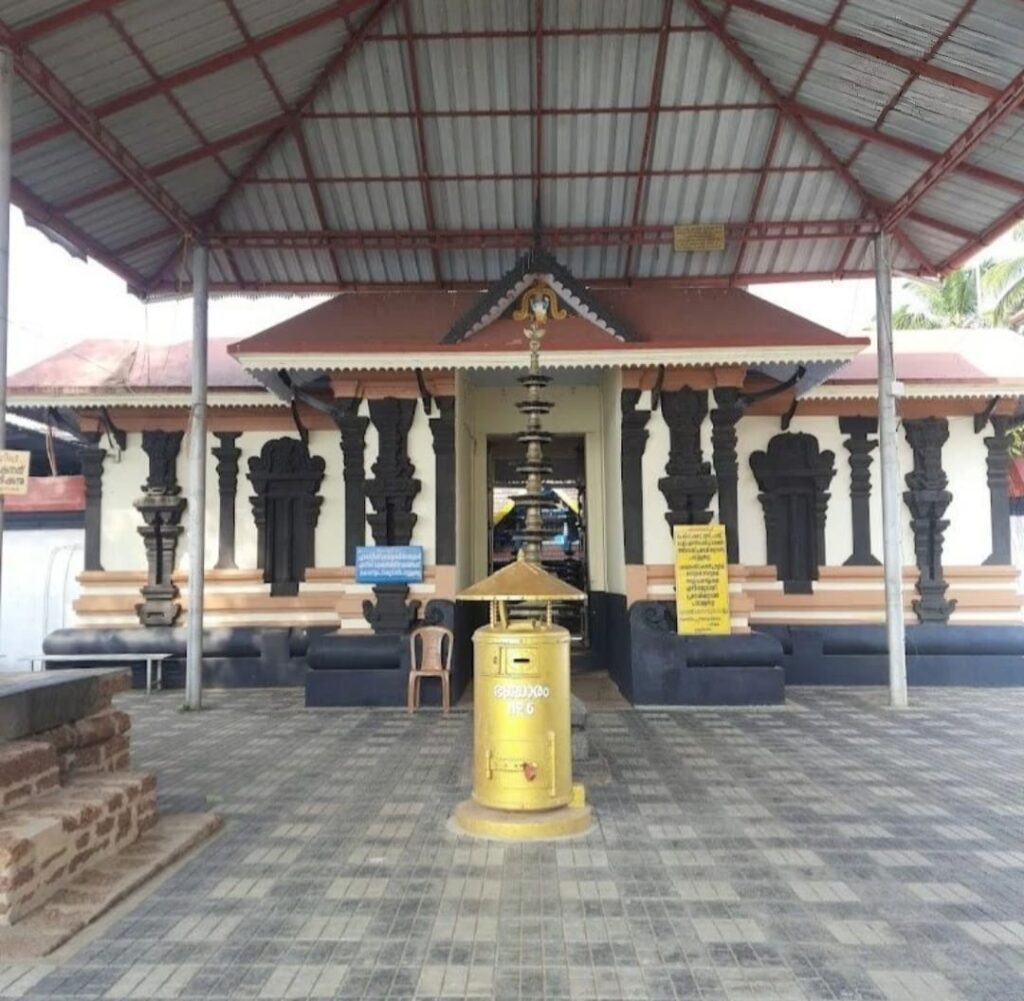
Upadevata:
Shri Maha Lakshmi
Aadi Ganesha
Ayyappan
Architecture – Shri Thirunavaya Mukunda Temple
The square-shaped main temple complex or the Shri Kovil is 2 Storey. The Shri Thirunavaya Nava Mukunda Temple complex is constructed in Kerala-style architecture. It is also said that this temple was built centuries ago, and famous Kerala architect Perumthachan performed renovation to the temple structure about 1300 years back. Apparently, there was slight slanting to the temple structure on the north side and Perumthachan inserted a chisel and corrected the structure. A piece of the chisel can still be seen on the north side.
Another significance of the construction of the Shri Thirunavaya Nava Mukunda Temple is that on the day of Vishu (in the month of April), the sunlight falls inside the Shri Kovil or sanctum sanctorum. The Ganapati Pratistha is towards the southwest of Nalambalam (main temple complex).
Nearby Attractions
